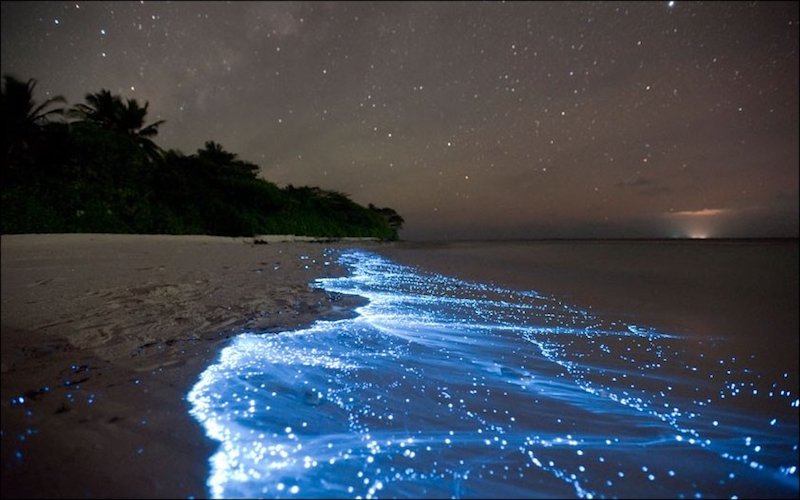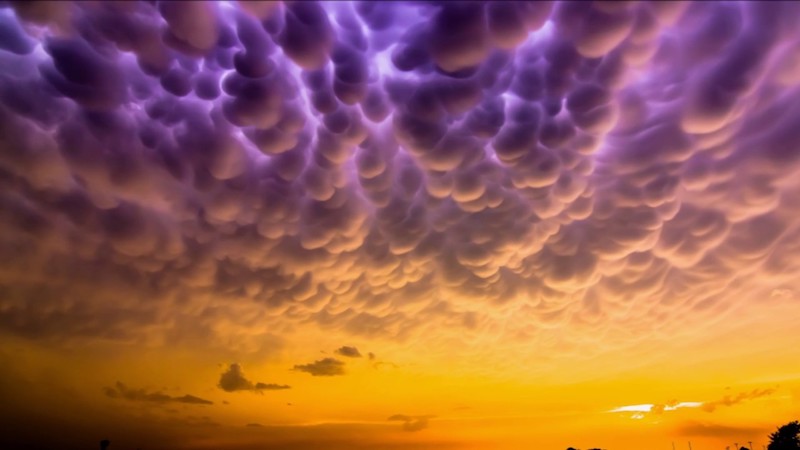Humans are generally quite curious. We want to see more and know more. We constantly look for the newest, coolest, most beautiful thing out there and it differs for each of us. Some look for new fashion trends, others constantly keep on top of scientific discoveries. Certain people feel the need to always know what’s cool and new in the world of tech, and the more artsy ones like to know what’s the latest craze in the art world. But you know what? Sometimes to see a cool and beautiful thing you don’t need to invent it, you just need to look around. Nature can be pretty fantastic and mind boggling. Today we offer you a list of 8 coolest and most beautiful natural phenomena.
1. Frozen Methane Bubbles
If you want to see this natural phenomenon Lake Abraham in Alberta, Canada is your best bet, but it also happens in other lakes that are situated at high altitudes. So how does this happen? Well mostly these frozen bubbles come into existence when something like leaves, insects or small dead animals fall into the lake and gets eaten by bacteria that produce methane as a byproduct. The methane freezes when it touches ice and the result is stunning. It’s a bit dangerous though, since these bubbles are highly flammable (it’s methane after all), so when the ice melts in the spring it’s better not to light any matches in the vicinity or there will be an explosion.

2. Sea of Stars
Sea of Stars is a phenomenon that happens in Maldives, on Vaadhoo Island. Here you can see beautiful sandy beaches transform into something out of the Avatar movie in the evening. The waters start sparking with little blue lights and leave behind what looks like little lights. It really does look like the sea is made of stars here, but really it’s just bioluminescent phytoplankton that creates this effect.

3. Aurora
Aurora, also known as northern light, is a magnificent natural light display that happens in the sky at high altitudes. It has to do with protons and electrons, magnetic fields and solar winds, and a lot of other complicated sounding scientific terms. We urge you to read up on it if you’re curious, but let’s just say that it’s one of those gorgeous things you just have to see at least once in your lifetime.

4. Lenticular Clouds
Lenticular clouds look like something out of a sci-fi movie. They’re shaped like a lens or a saucer and some people like to theorize that they’re actually a cover up for UFOs. In reality, these clouds are completely natural and form around high mountain tops due to airflow disruption and low temperatures.

5. Frost Flowers
Frost flowers come in all shapes and sizes and can form both on the ground and on water. On the ground they usually form around long stemmed plants when the temperature is freezing but the ground has not yet frozen. The sap in the plant oozes out through thin cracks and freezes when it comes in contact with the air. A similar thing happens on lakes when the temperature above the water is colder than under it.

6. Light Pillars
Light pillars look like giant lightsabers suspended in mid air and can be quite colorful depending on the light source and the conditions around them. They can be created by the sun, the moon, and even street lights or other manmade objects. They’re basically a reflection of light in tiny ice particles in the air.

7. Fire Rainbows
“Fire rainbow” is actually quite a misleading name for such a phenomenon, since there’s no actual fire involved. In fact it’s quite the opposite. It’s actually just light reflections in small ice crystals that are seen on the cirrostratus or cirrus clouds, which admittedly do have a rather wispy fire like shape to them.

8. Mammatus Clouds
Mammatus clouds are rather ominous in their appearance and are generally associated with thunderstorms. These lumpy pouches at the base of the clouds are formed by cold air sinking to the bottom of the cloud. Mammatus clouds aren’t always uniform and can be both smooth and ragged in their shape, as well as appearing quite translucent at times.
